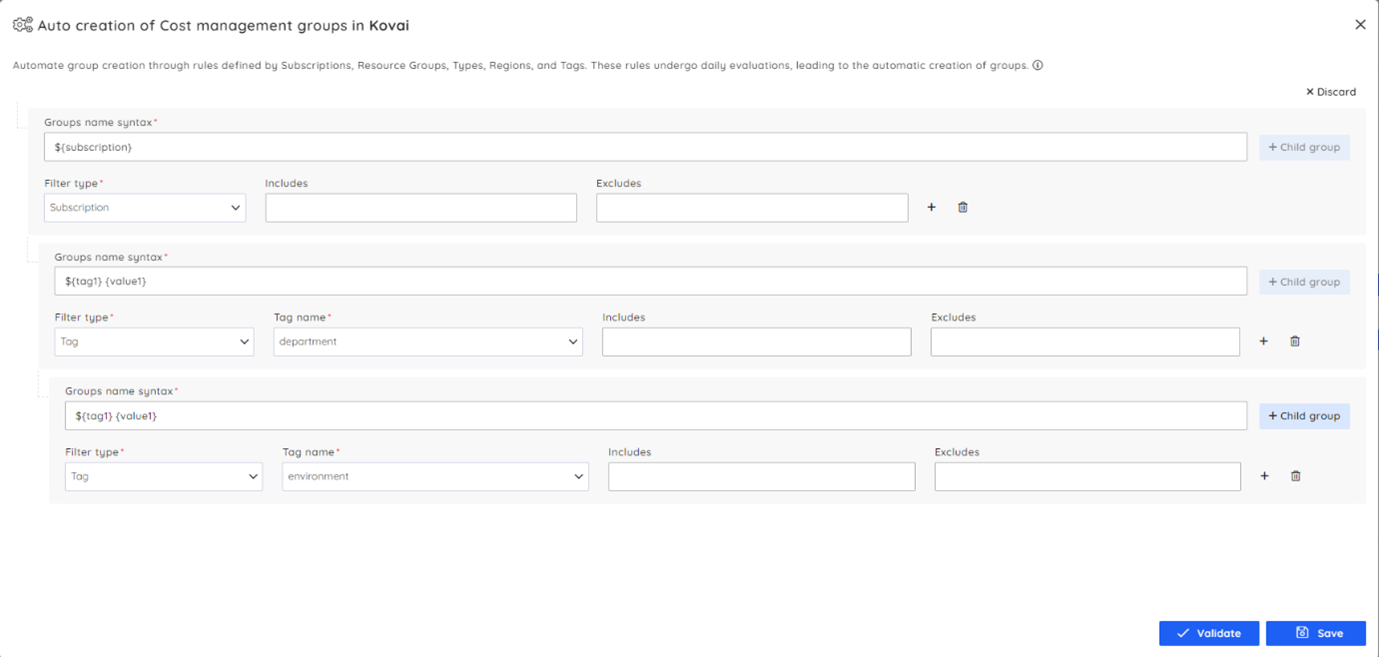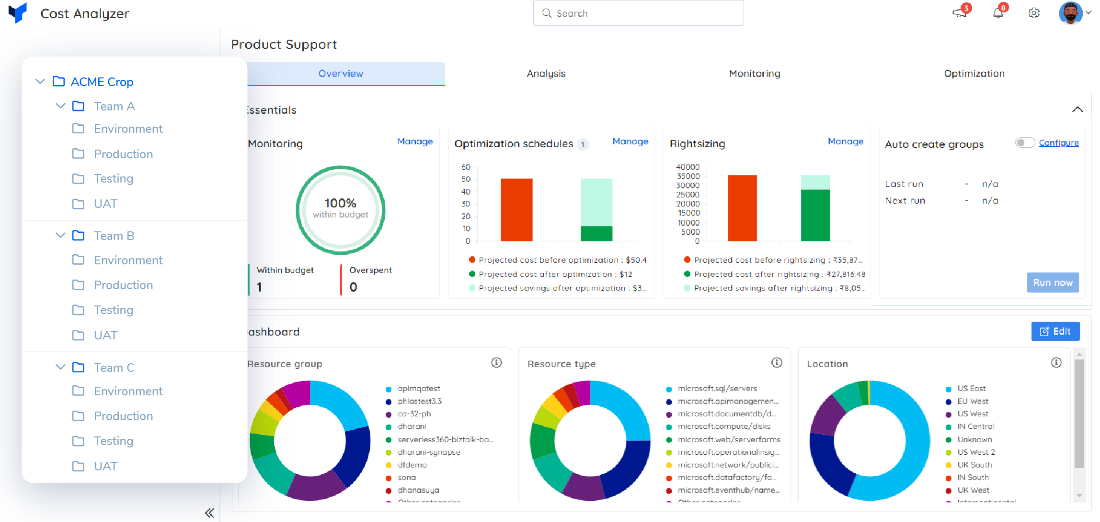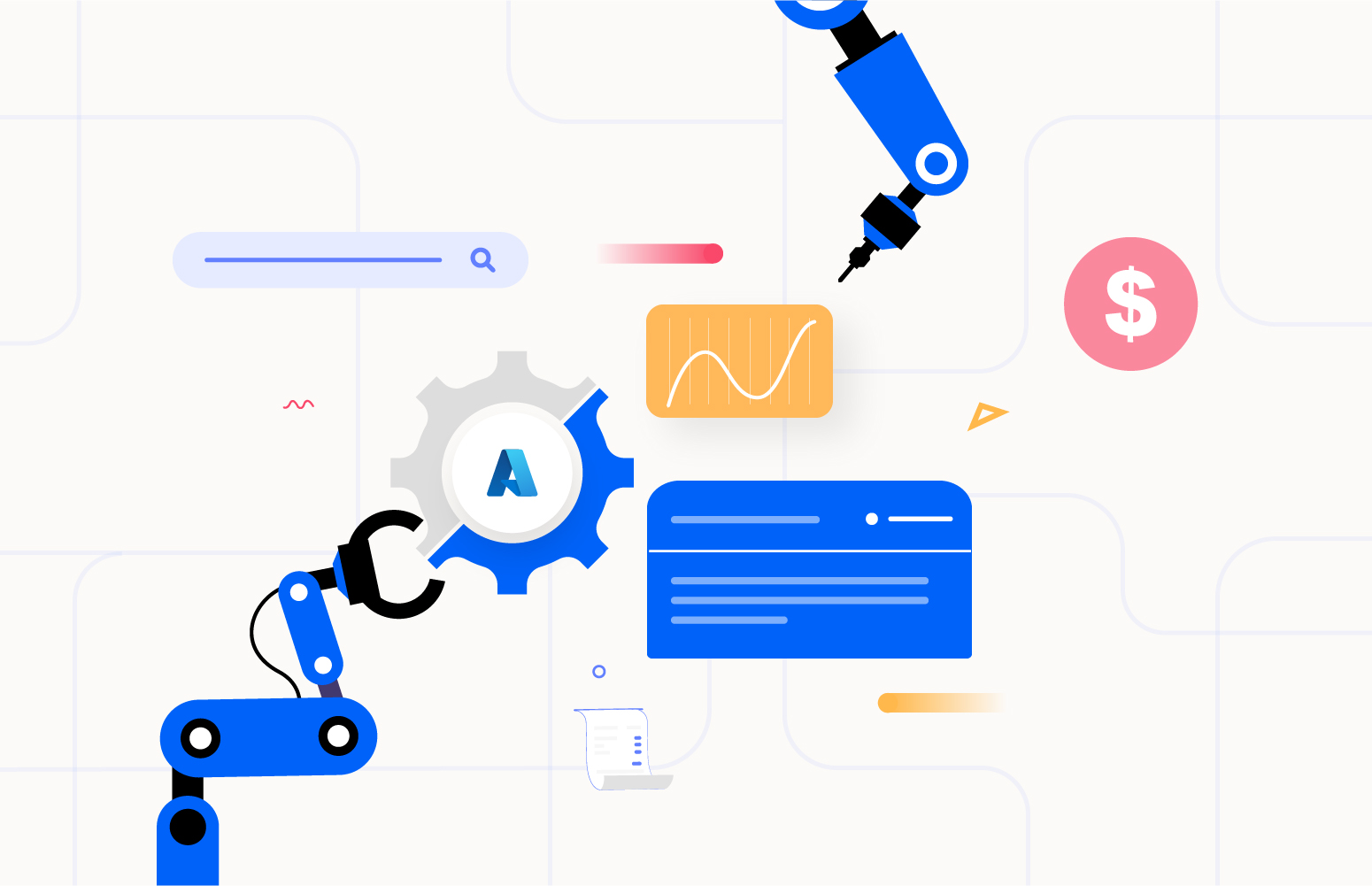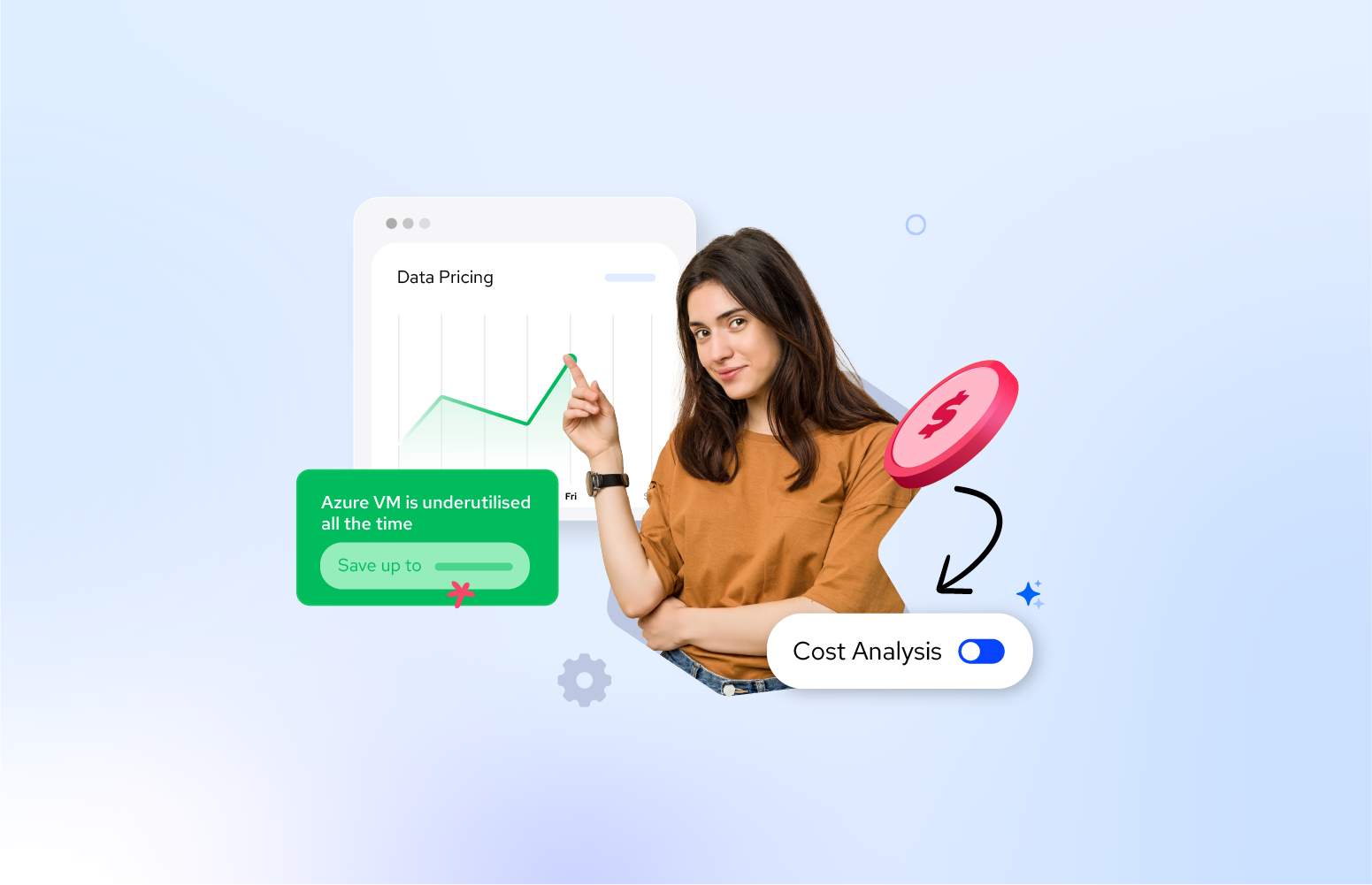What is Azure Cloud Unit Economics?
The scalability of the cloud and its inherent variable cost has created financial and operational challenges, which demand the process of tracking varying costs in the dynamic Azure infrastructure at a granular business context level.
Unit economics is a process of profit maximization in the cloud based on objective measurements like cost per product. This approach assesses how the organization is performing against its business goals.
This process will likely lead organizations to build efficient software and act as a common language to align engineering and business leaders.
In Azure, keeping a handle on your unit economics is crucial for clarifying your overall expenses in a way that makes sense to your business and steering your company toward steady growth. By monitoring metrics such as cost per customer, cost per product or feature, and even the expenses tied to your engineering teams, you gain valuable insights that help you make informed decisions.
Why it is important to track unit cost data in Azure?
Organizations that attempt to optimize cloud cost have started embracing the FinOps principles.
If you’re reading this article, you will likely adopt or mature the FinOps practices. In that case, unit economics is one of the most significant concepts for those who want to adopt FinOps. Because Azure unit economics directly supports all six FinOps principles. Here is how:
| FinOps Principles | Reasons behind why unit cost insights are required |
| Decisions are driven by the business value of the cloud | Here unit economics data like cost per product demonstrates business impact better than aggregate total spend in deployment model like Subscription cost |
| Everyone takes ownership of cloud usage | To delegate ownership, it is significant to obtain visibility into unit cost data like cost per team, per environment and provide access to these cost groups |
| FinOps data should be accessible and timely | A hierarchical tree view of unit cost spend provides consistent and on-demand visibility into all levels of the organization |
| Decentralized team drives FinOps cost optimization | Rate, commitment, and discount optimization insights need to be decentralized with teams to promptly action and reduce costs |
| Team needs to collaborate on cost decisions | Unit economics establishes a common language for finance, technology, product, and business teams to collaborate |
| Take advantage of the variable cost model | Insights into the cost per feature are required to embrace proactive system design with continuous adjustments in cost optimization over inactive cleanups |
In general, unit economics is not a goal by itself, rather a process for achieving the maximum cloud ROI in pursuit of adopting six FinOps principles.
Challenges with Azure cost management in obtaining unit cost intelligence at scale
Azure offers cost management tools that can help you analyze usage and spending. Still, it may not provide detailed unit economics data out of the box in the sense of granular revenue and cost breakdowns on a per-customer or per-team basis. Here is a quick view of the cost management tools available in the Azure portal and its purposes.
Azure Cost Management and Billing
This service provides cost analysis and reporting tools to help you understand your Azure spending. It allows you to view and analyze aggregated actual or amortized costs in the deployment model views like subscriptions, resources groups, & even tags for desired time.
You may get unit cost insights in Azure Cost Management with the following restrictions or considerations.
We have comprehensive comparison of Turbo360 and Azure Cost Management outlining the challenges with ACM.
Cross-Subscriptions and Tenants
Your application or business unit resources mustn’t span across multiple subscriptions and tenants to obtain unit cost insights. The service’s functionality is optimized for scenarios where cost data is consolidated within a single subscription or tenant.
Manual cost aggregation
While the service allows you to aggregate costs with custom filters manually, it cannot provide instant unit cost visibility. Though the Azure portal offers an option to save custom graphs as shared views, it comes with the constraint of seeing the data in deployment models like Management Group, Subscriptions, and Resource Group.
Decentralized cost data and access control
Azure Cost Management does not offer a hierarchical view of unit cost data and provides granular access, making it challenging to decentralize cost information to specific teams. The unavailability of granular user access to detailed cost insights impacts the effort of driving accountability within different organizational units.
Accessibility for non-technical teams
The Azure portal, where the Cost Management service is primarily housed, may not be suitable for non-technical teams such as finance, business, and executives due to security concerns and the need for technical expertise to navigate the platform. It hinders efficient cross-team collaboration and informed decision-making.
Manual calculations and data points
Users should be prepared for manual calculations, particularly in scenarios involving thousands of data points. This may require significant bandwidth for users to perform these calculations in excel sheets and obtain a snapshot of current unit costs.
Azure Pricing Calculator
The Azure Pricing calculator allows you to estimate your monthly Azure costs based on your expected usage patterns. While it won’t provide unit economics data, it can help you understand the cost implications of different services.
Azure Advisor
Azure Advisor offers cost recommendations based on your Azure configurations. However, it provides diluted cost optimization insights for all the resources in the subscription; it makes the team oversight as all the insights may not be relevant to them.
Also, the Azure portal does not offer a resource auto-scheduler to scale the resources during peak and off business hours, as this is a significant cost optimization opportunity for many organizations to realize big savings.
How Turbo360 facilitate the unit cost generation with automation?
Turbo360 enables effortless creation of customized views of Azure Cloud Unit Economics. You can organize and analyze costs based on your unique situation by tailoring the categories in a hierarchical tree structure that aligns with your tracking needs—teams, customers, products, features, or any relevant business unit.
Our intelligent cost management group automation takes care of the intricacies. It systematically creates and assigns costs to each designated category within your specified hierarchy rules. This setup undergoes a daily evaluation process, ensuring the automatic generation of similar cost groups and seamless updates to the cost data.
This functionality becomes particularly advantageous when establishing an initial and ongoing unit cost view at scale for a dynamic Azure environment. Let’s look into a quick example to illustrate how Turbo360 simplifies the process of instantly creating unit cost data.
Consider the scenario where you have ten engineering teams or business units, each with three non-production environments. Each team, in turn, operates in distinct environments like Development, Staging, and Testing. The goal is to obtain cost data at each environment level (Child Node), neatly organized under their respective Departments (Parent Node).
Creating and manually setting up unit cost views for each of these teams could be a time-consuming task. This is precisely where automation plays a crucial role.
Consider each team uses various resources from different root subscriptions with the following Azure tag considerations.
- Each resource comes with a tagging parameter indicating the Department name.
- Additionally, each resource is tagged with an Environment name.
Turbo360 lets the users define its customizable organization hierarchy with an automation rule like the picture below; the system detects different values under each key (department and environment) of the tag and creates a unit cost view based on the defined hierarchy rules.

The above defined automation rule creates a hierarchical cost view for each team with its respective department cost like the below picture

How customizable are the automation rules in Turbo360?
The automation rules come with great flexibility for users to define their custom hierarchy to exactly depict their organization tree structure and completely allocate the cost to the business dimension they care about.
The main purpose of the cost management groups in Turbo360 is to turn the deployment-focused cost view into an operation-friendly view and make all the stakeholders collaborate to make informed decisions about the cost.
In the automation rule configuration, there are two major fields:
- Group Name Syntax (Mandatory):
- Filter Type (Mandatory):
This field allows users to define the name of the cost group they want to create.
For example, to create a cost group for the production environment across all available subscriptions, the syntax could be Production$(Subscriptions).
Define the rule by choosing a Filter Type such as Subscription, Resource Type, Resource Group, Location, or Tag. Specify the filter items to be included in the automation groups in the Includes field.
For instance, to derive production costs, select desired tags or resource group in the Include filter. You can also create multiple filters for a node.
Further, if you would like to break down the production cost into granular level like cost per product, you can define the child node and the process for creating it is similar to that of creating parent node, where the name and filter type are defined.
Conclusion
Achieving optimal results in the Azure cloud environment requires a comprehensive understanding and effective management of unit economics.
While Azure provides tools such as Azure Cost Management and Billing, Azure Pricing Calculator, and Azure Advisor to help manage costs, these tools have limitations when it comes to obtaining detailed unit economics data at scale. Challenges include issues while aggregating cost with cross-subscriptions and tenants, manual aggregation, decentralized cost data, and limited accessibility for non-technical teams.
In summary, Turbo360’s automation capabilities provide a powerful solution for organizations looking to navigate the complexities of Azure cloud unit economics. By adopting such tools, businesses can enhance their cost optimization efforts, promote collaboration across teams, and ultimately drive cost accountability within different organizational units to maximize savings.









